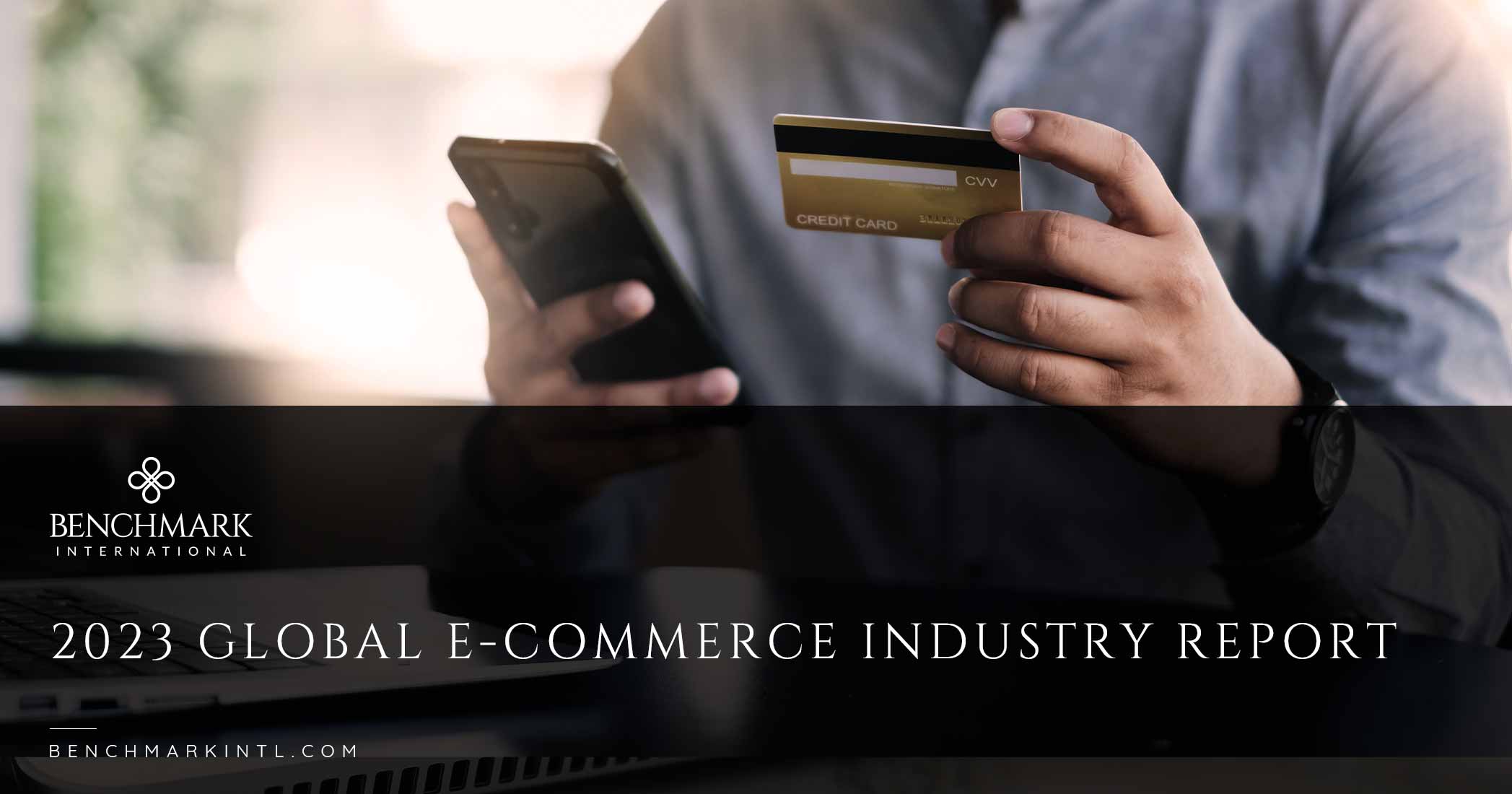
By 2027, the e-commerce market forecasts a volume of $6.35 trillion by demonstrating a compound annual growth rate (CAGR) of 11.51%.
To put this growth in perspective, refer to the graph below. Worldwide retail e-commerce sales are also predicted to grow by 8.9% this year.
Governments are also working to improve Internet access in more rural regions, which will aid in driving e-commerce use. Governments and companies also lead more initiatives to promote e-commerce sales, improve policies, and plan for long-term viability and consumer protections. Higher standards are also improving countries' environmental and social norms, which can affect the viability of e-commerce in these regions.
By 2027, the number of users in the e-commerce market is expected to reach 5.29 billion.
The graph below shows the number of internet and smartphone users from 2020 through 2023.
The two main types of e-commerce are business-to-business (B2B) and business-to-consumer (B2C). The market consists of revenues generated by e-commerce services such as drop shipping, subscriptions, and crowdfunding.
The e-commerce market encompasses the retail sales of clothing, electronics, furniture, books, groceries, and cosmetics. Values in this market are known as "factory gate values." This refers to the value of goods the manufacturer sells to other entities or customers.
The market is mature in developed countries, and the competition among e-commerce players is expensive. The largest online marketplaces (such as Amazon) are thriving, while smaller stand-alone retailers need help to create brand loyalty and are dealing with high cart abandonment rates.
Established and big corporations increasingly gravitate toward doing business online due to the lower cost of communication and infrastructure. E-commerce allows them to reach customers more efficiently and gain more exposure. Online marketing tools like Google and Facebook ads drive the e-commerce market.
By Region
Last year, North America was the largest region in the e-commerce market, followed by the Asia-Pacific region. Most of the revenue is generated from China, as the Chinese population is tech and mobile-savvy, and Chinese e-commerce giants are consistently driving the market forward and expanding to other markets such as India and Indonesia. E-commerce developments in China are expected to define the market over the next decade, as they are already innovating payment methods, logistics, and other areas of online retail.
In 2021, the number of consumers who made at least one purchase online was 74% of the population in the U.S. and 81% of the people in the U.K.
Brazil is expected to rank first in retail e-commerce development among 20 countries worldwide between 2023 and 2027, at a CAGR of 14.6%. Argentina and Turkey are among the world's fastest-growing e-commerce markets, with a CAGR of 14%.
E-commerce has also gone cross-border, with online buying, selling, and shipping across borders growing with digitalization and improved Internet access.
By Segment
Fashion is expected to continue to dominate the worldwide market through 2027, generating an estimated $870 billion in 2022. Globally, the fashion segment is forecast to account for $1.06 trillion in 2023, followed (in order) by electronics, toys, furniture, beauty, food, beverage, and media. The food segment is expected to witness the most growth through 2027.
In 2022, the fashion segment accounted for more than $197.3 billion of all e-commerce revenue in the U.S. Apparel sales through mobile devices were up nearly 20% yearly in Q4 2022, and total orders were up 11.5%.
Digital content, financial services, travel & leisure, and e-tailing are among more e-commerce options becoming available and gaining popularity as Internet use grows. As a result, shoppers' increasing technical savvy is expected to impact market growth positively. Shoppers are also becoming more familiar with and comfortable using new technologies available on several e-commerce platforms in the metaverse, such as virtual shopping, augmented reality, and virtual reality retail. People all around the world can now engage with products in the metaverse, no matter what their location may be.
M&A
2023 is expected to be a busy year for e-commerce M&A, with many investors considering the past year merely a cooling-off period after a decade of strong growth.
Increased cost pressures in 2022 have impacted e-commerce businesses' narrow margins, creating a correction for many high-growth, low-profit companies in public markets. At the same time, well-established companies that have historically led in growth and generated strong free cash flows (FCF) have outperformed and are often targeted by buyers looking for strategic value and bottom-line growth.
In the last year, privately held e-commerce businesses were forced to restructure supply chains, raise their working capital, or seek new suppliers. They have also been faced with rising labor and software costs. But the companies that have navigated these external pressures have emerged much stronger and are now in a strong position for growth, higher margins, and improved cash flow in 2023.
There is ongoing investor demand for high-quality companies with solid balance sheets in the form of patents and other valuable intangibles that protect brands and products, and these companies see elevated multiples.
There are also still record levels of dry powder raised by private equity firms in 2022 that will eventually need to be deployed.
Improving Bottom Lines
E-commerce companies of all sizes can separate themselves from the competition through the implementation of several different key marketing strategies, including:
- Optimized ad campaigns
- Social media brand building across platforms
- Customer segmentation
- Long-term brand building
- Diversifying sales channels
- High-quality and relevant content
- Strong audience engagement
Americas: Sam Smoot at +1 (813) 898 2350 / Smoot@BenchmarkIntl.com
Europe: Michael Lawrie at +44 (0) 161 359 4400 / Lawrie@BenchmarkIntl.com
Africa: Anthony McCardle at +27 21 300 2055 / McCardle@BenchmarkIntl.com
ABOUT BENCHMARK INTERNATIONAL:
Benchmark International is a global M&A firm that provides business owners with creative, value-maximizing solutions for growing and exiting their businesses. Benchmark International has handled over $10 billion in transaction value across various industries from offices across the world. With decades of M&A experience, Benchmark International’s transaction teams have assisted business owners with achieving their objectives and ensuring the continued growth of their businesses. The firm has also been named the Investment Banking Firm of the Year by The M&A Advisor and the Global M&A Network as well as the #1 Sell-side Exclusive M&A Advisor in the World by Pitchbook’s Global League Tables.
Website: http://www.benchmarkintl.com
Blog: http://blog.benchmarkcorporate.com

 Benchmark International
Benchmark International  Benchmark International
Benchmark International 







